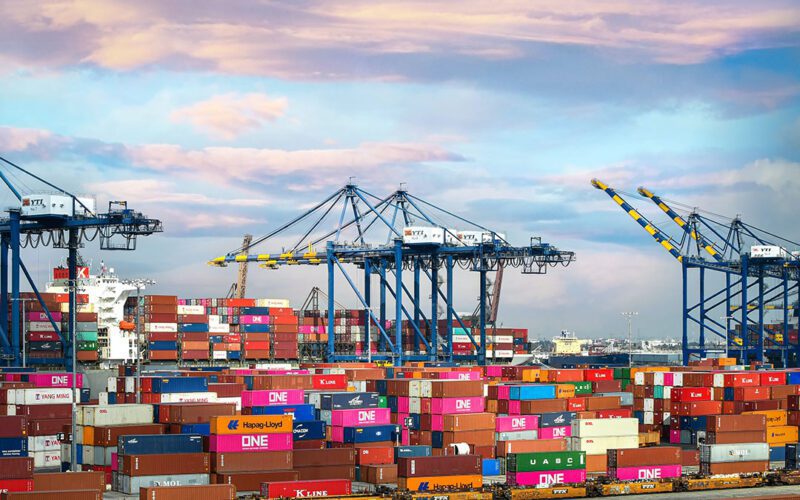 The ports of Los Angeles and Long Beach together form the largest port complex in the Western Hemisphere and rank as the Nos. 1 and 2 busiest container ports in the U.S.
The ports of Los Angeles and Long Beach together form the largest port complex in the Western Hemisphere and rank as the Nos. 1 and 2 busiest container ports in the U.S.
Every day, their combined operations release approximately 100 tons of pollutants into the air with both megaports, since 2006, energetically implementing programs to improve the region’s air quality by reducing their emissions across the board.
Starting this year, the latest in a long line of regulations has taken effect intending to do that.
The newest incarnation of California’s new Vessel At-Berth Regulation places restrictions on the volume of emissions ships can release into the air while visiting dockside facilities at the state’s six major deep-water ports − Los Angeles, Long Beach, Oakland, San Diego, San Francisco, and Hueneme.
Specifically, the rule builds on the original At-Berth Regulation, adopted in 2007, by modifying the method used to calculate the volume of emissions from ships. While the original regulation calculated emissions on a ‘per-fleet’ basis, the newest phase of regulation will calculate them by individual ship visit.
While the original regulation covered container ships, cruise liners, and reefer vessels, the newest phase of the regulation will also cover tankers and roll-on/roll-off vehicle carriers that will be required to comply with curtailed emissions starting in 2025 in Southern California, and in 2027 in Northern California.
So far the regulations are credited with reducing toxic air emissions by 80% from former levels. Once fully implemented and expanded, the updated regulation is expected to deliver a 90% reduction in pollution from an expected additional 2,300 vessel visits per year, and result in a 55% reduction in potential cancer risk for communities near the Ports of Los Angeles, Long Beach, and the Bay Area boutique Port of Richmond.
“This rule clamps down on air pollution from the largest ships while they’re docked in California ports, and there are multiple ways terminals, ports, ship owners and operators can comply,” said Mary D. Nichols, chairwoman of the California Air Resources Board, which administers and enforces the regulation. “[This regulation] will deliver cleaner air and public health benefits to all those who live in port-adjacent communities throughout California.”
For a long time, California has sought to decrease harmful emissions from ships with an ‘At Berth Regulation’ enacted in 2007 which aimed at lowering emissions from ships while dockside at the state’s ports. The regulation has given ship operators numerous ways to comply with the directive, such as plugging into ‘on-dock’ power grids or other developing technologies.
Shore power “is where the vast majority of reductions are achieved,” says Bonnie Soriano, chief of the Freight and Activity Branch of the Transportation and Toxics Division of the Air Resources Board. “But there is a lot of flexibility built into the regulation.”
Other methods of complying with the emission-curtailment regulation include barge-based ‘bonnet’ systems that utilize a crane arm to receive emissions from ship stacks and neutralize them. The barge bonnets are so far the only alternative technology approved by the Air Resources Board.
“But in the future, who knows?” says Soriano. “There are a lot of pathways” to satisfy the requirement such as reducing emissions from other sources, such as bulk carriers that currently operate without emission reduction requirements.
“The rule changed what I would call the calculations of requirement,” said Thomas Jelenić, vice president of the Oakland, Calif.-headquartered Pacific Merchant Shipping Association.
In the past, he says, emission mitigation was calculated on a fleet-average basis, while, currently, it is calculated per individual vessel visit, which puts more risk of penalty on the terminal. “It’s more complex but doesn’t result in more emission reductions,” he says.
Changing from a fleet-based to an individual vessel-based system of reporting visits places greater responsibility on terminals to ensure vessels are complying with the regulation. To this point, no sanctions have been issued by the California Air Resources Board, the agency in charge of enforcing the regulation, which applies to “any person who owns operates, charters or leases any U.S. or foreign-flag ocean-going vessel that visits a California port, terminal or berth.”
Among the targeted emissions are oxides of nitrogen; reactive organic gases; diesel and other particulate matter; and ‘greenhouse’ gas. All these emanate from ships while underway and to a lesser extent while at dockside. The regulations also exert control over excess visible emissions.
So far the process has moved smoothly with port authorities saying the biggest challenge for terminals will be building out the infrastructure necessary to handling the various methods of emissions capping.
“We already have shore power available for containers at the terminal,” said Chris Cannon, chief sustainability officer at the Port of Los Angeles. “What currently is being worked on is the alternative emission control strategies. The biggest challenge for the port is the development of infrastructure to comply with the regulations.” •

